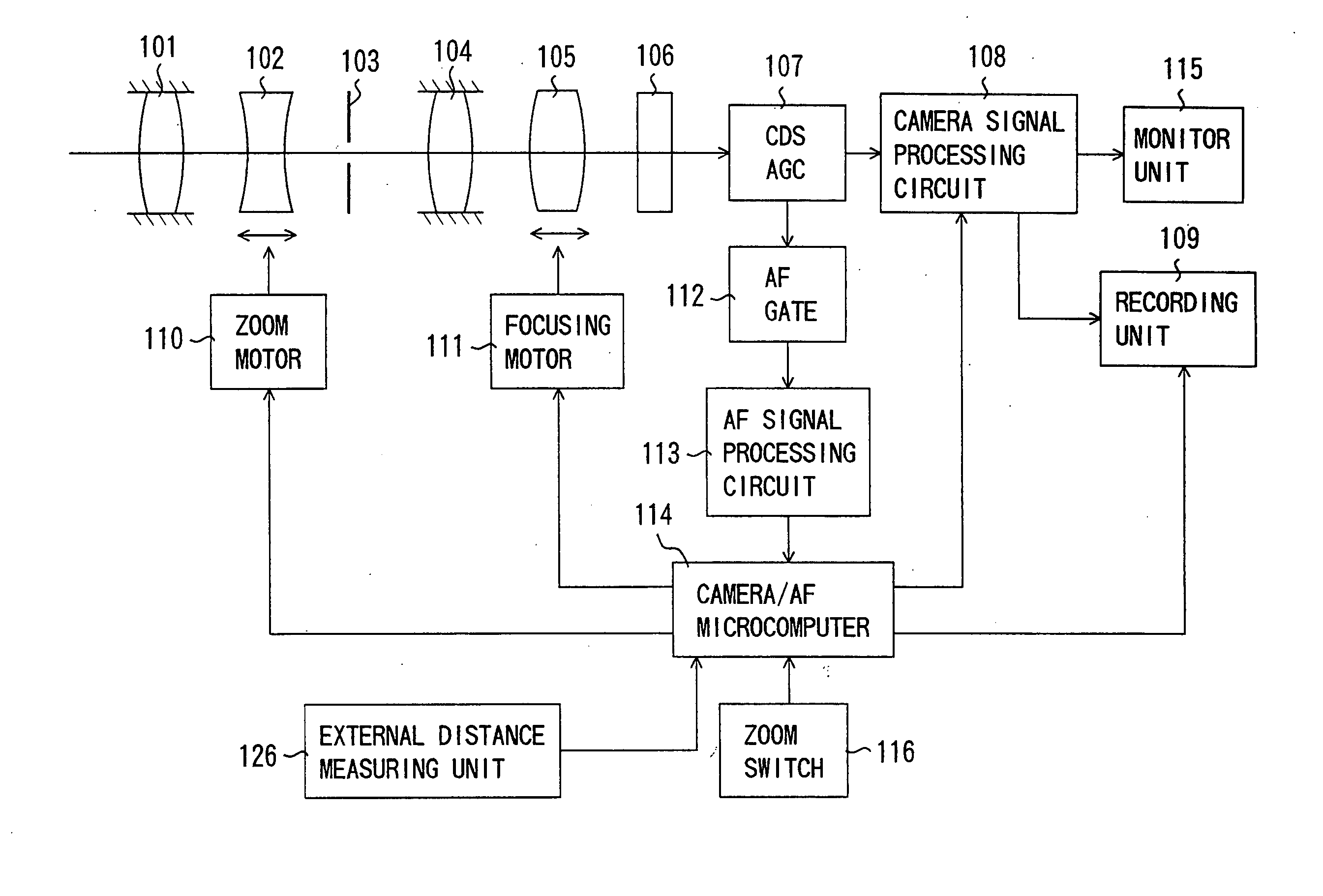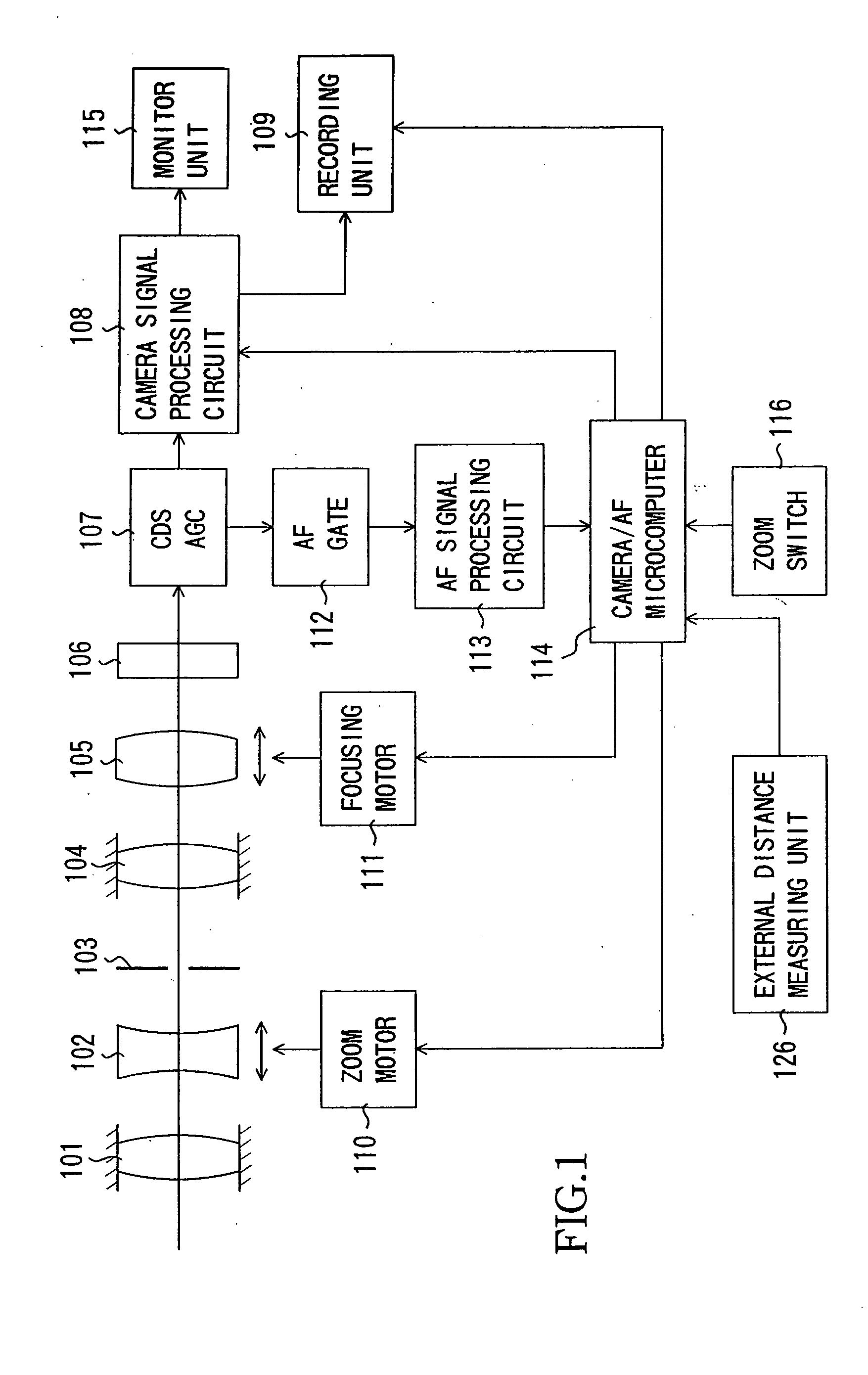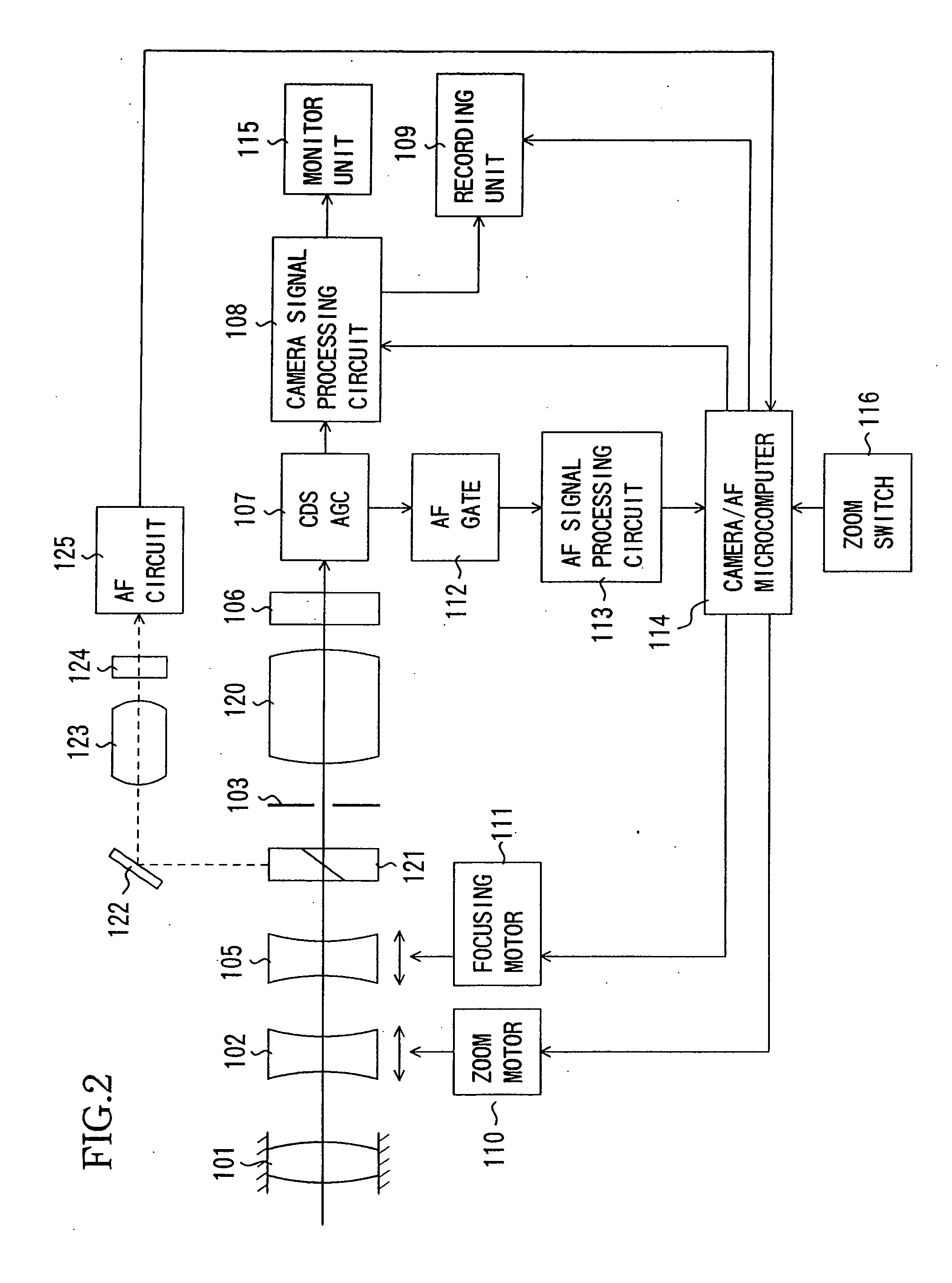Image-taking apparatus and focus control program for image-taking apparatus
a technology of image-taking apparatus and focus control, which is applied in the field of focus control in the image-taking apparatus, can solve the problems of taking a long time to achieve an in-focus state, and achieve the effect of improving the accuracy of re-performance (restart) determination and reliably maintaining an in-focus sta
- Summary
- Abstract
- Description
- Claims
- Application Information
AI Technical Summary
Benefits of technology
Problems solved by technology
Method used
Image
Examples
embodiment 1
(Embodiment 1)
FIG. 1 shows the structure of a video camera (an image-taking apparatus) which is Embodiment 1 of the present invention. While Embodiment 1 is described in connection with a video camera integral with an image-taking lens, the present invention is applicable to a video camera on which an image-taking lens is mountable. In this case, a control signal produced by a camera / AF microcomputer, later described, is communicated to a microcomputer in the image-taking lens such that the camera / AF microcomputer controls the drive of a focus lens unit through the lens microcomputer. In addition, while Embodiment 1 is described in connection with the video camera, the present invention is applicable to various types of image-taking apparatuses such as a digital still camera. This applies to Embodiment 2, later described.
In FIG. 1, reference numeral 101 shows a first fixed lens unit, reference numeral 102 shows a lens unit (hereinafter referred to as a zoom lens unit) which provid...
embodiment 2
(Embodiment 2)
FIG. 2 is a block diagram showing the system structure of a video camera (an image-taking apparatus) which is Embodiment 2 of the present invention. In Embodiment 2, components identical to those in Embodiment 1 described above are designated with the same reference numerals and the description thereof is omitted.
While Embodiment 1 has been described for the case where the external distance measuring unit 126 is used as the second detecting means, Embodiment 2 is described for the case where a TTL (through the lens) phase difference detection unit is used.
An image-taking optical system of Embodiment 2 is formed of a first fixed lens unit 101, a zoom lens unit 102, a focus lens unit 105, a stop 103, and an image-forming lens unit 120, disposed in order from an object side (the left side in FIG. 2). The image-taking optical system constituted by these lens units is a rear focus optical system formed of the four lens units having a positive, a negative, a negative, a ...
PUM
 Login to View More
Login to View More Abstract
Description
Claims
Application Information
 Login to View More
Login to View More - R&D
- Intellectual Property
- Life Sciences
- Materials
- Tech Scout
- Unparalleled Data Quality
- Higher Quality Content
- 60% Fewer Hallucinations
Browse by: Latest US Patents, China's latest patents, Technical Efficacy Thesaurus, Application Domain, Technology Topic, Popular Technical Reports.
© 2025 PatSnap. All rights reserved.Legal|Privacy policy|Modern Slavery Act Transparency Statement|Sitemap|About US| Contact US: help@patsnap.com



